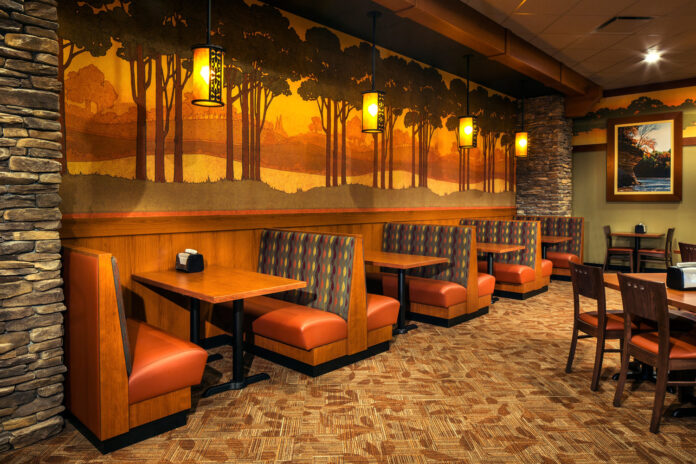Restaurant booths have significantly shaped how we experience food and ambiance in the ever-evolving world of dining out. Beginning in the early 19th century, these cozy, semi-private sitting configurations have a long tradition. Restaurant booths have improved the appearance and usability of eating businesses over time, giving customers a warm and private dining experience. In this piece, we will examine the development and significance of restaurant booths, looking at their historical context, current design trends, and use in the modern restaurant sector.
Historical roots of restaurant booth
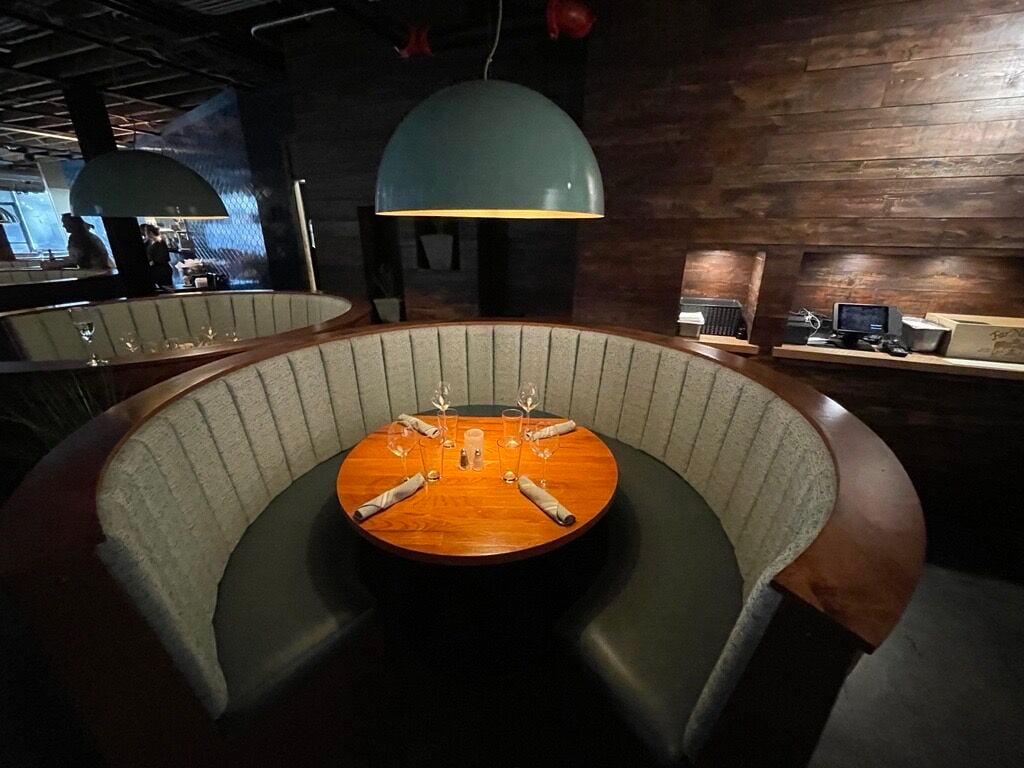
We must first examine their historical beginnings to comprehend the relevance of restaurant booths in contemporary dining places. The origins of restaurant booths may be found in the taverns and inns of the 19th century.
Early origin in tavern
Old English and American taverns, where customers sought a place to enjoy their meals and beverages apart from the busy mob, are where the idea of booth seating may be traced. These places frequently had cozy alcoves with wooden chairs and tables, giving patrons a sense of seclusion and warmth.
Emergence in dinner culture
The popularity of diners in the United States increased in the early 20th century, and restaurant booths were increasingly used. Eateries, famed for their informal and inexpensive meals, started using booths to make the most of the available space and to create a cozy ambiance. Customers may eat in the privacy and comfort of booths while listening to the newest music played by jukeboxes in the background.
Influence of Art Deco
The 1920s and 1930s Art Deco style significantly influenced how restaurant booths were made. Art Deco had an aesthetic impact on booth design because of its emphasis on geometric forms, vibrant colors, and luxury. The slick leather upholstery and chrome trimmings popular during this time gave booths a more upscale and contemporary appearance.
Role of restaurant booths in design and ambience
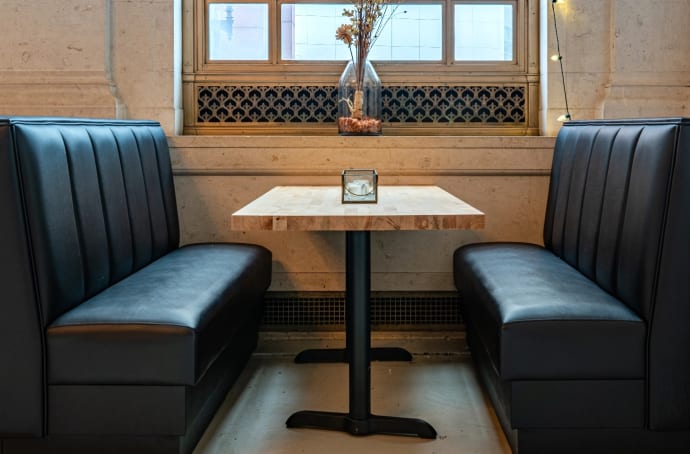
Restaurant booths have changed throughout history, but they have also significantly influenced the ambiance and aesthetics of eating facilities. Let’s investigate how their impact has affected restaurant decor.
Creating intimacy
To foster a cozy eating atmosphere, restaurant booths serve some important purposes. Booths promote interaction and help customers feel more at ease by giving a sense of isolation and separation from other diners. This closeness has dramatically influenced their ongoing appeal.
Maximizing space
Booths are renowned for their clever use of space. Booths are a more effective use of space than typical table and chair configurations, which may leave empty areas between customers. They are, therefore, perfect for smaller eateries that want to increase their customer capacity without sacrificing comfort.
Aesthetic impact
The appearance of a restaurant as a whole is significantly influenced by the design of its booths. Booths may match various interior design styles, from traditional leather banquettes to contemporary, minimalist designs. Booths are a flexible design feature since they may transmit a particular theme or atmosphere depending on the upholstery, color, and material choices.
Evolution of booth style and material
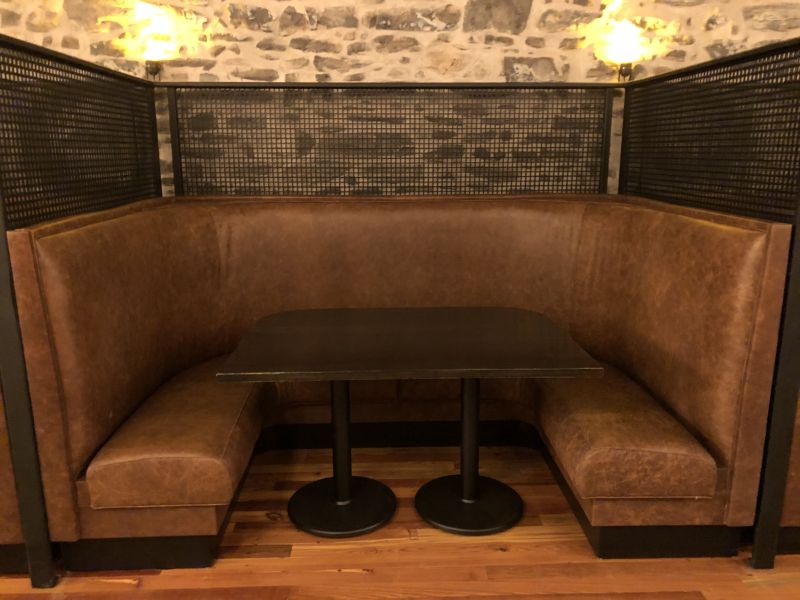
Restaurant booths have changed over time in terms of design, the materials they are made of, and the trends they represent. Let’s look at the evolving styles and materials for booths.
Classic leather and wood
Classic leather and wood booth designs were standard in diners and traditional American eateries in the middle of the 20th century. These booths had warm, timeless charm because of their rich leather seats and hardwood framework.
Mid-century modern
The mid-century modern design movement, which impacted booth design, also began in the middle of the 20th century. Mid-century modern booths had straightforward, geometric designs and frequently integrated brilliant colors like mustard, teal, and orange. Clean lines, primary forms, and a concentration on efficiency characterized them.
Contemporary minimalism
Modern restaurants have embraced a minimalist design trend in recent decades. These venues often have booths with clean lines, modest upholstery, and neutral colors. The need for a neat and clean eating space aligns with this fashion.
Customization and diversity
Customization has become a key trend in booth design in the twenty-first century. Nowadays, many restaurants choose custom-made booths that go with their logo and motif. As a result, there are now many different booth design trends, ranging from rustic and industrial to futuristic and avant-garde.
Ergonomics and comfort in both design
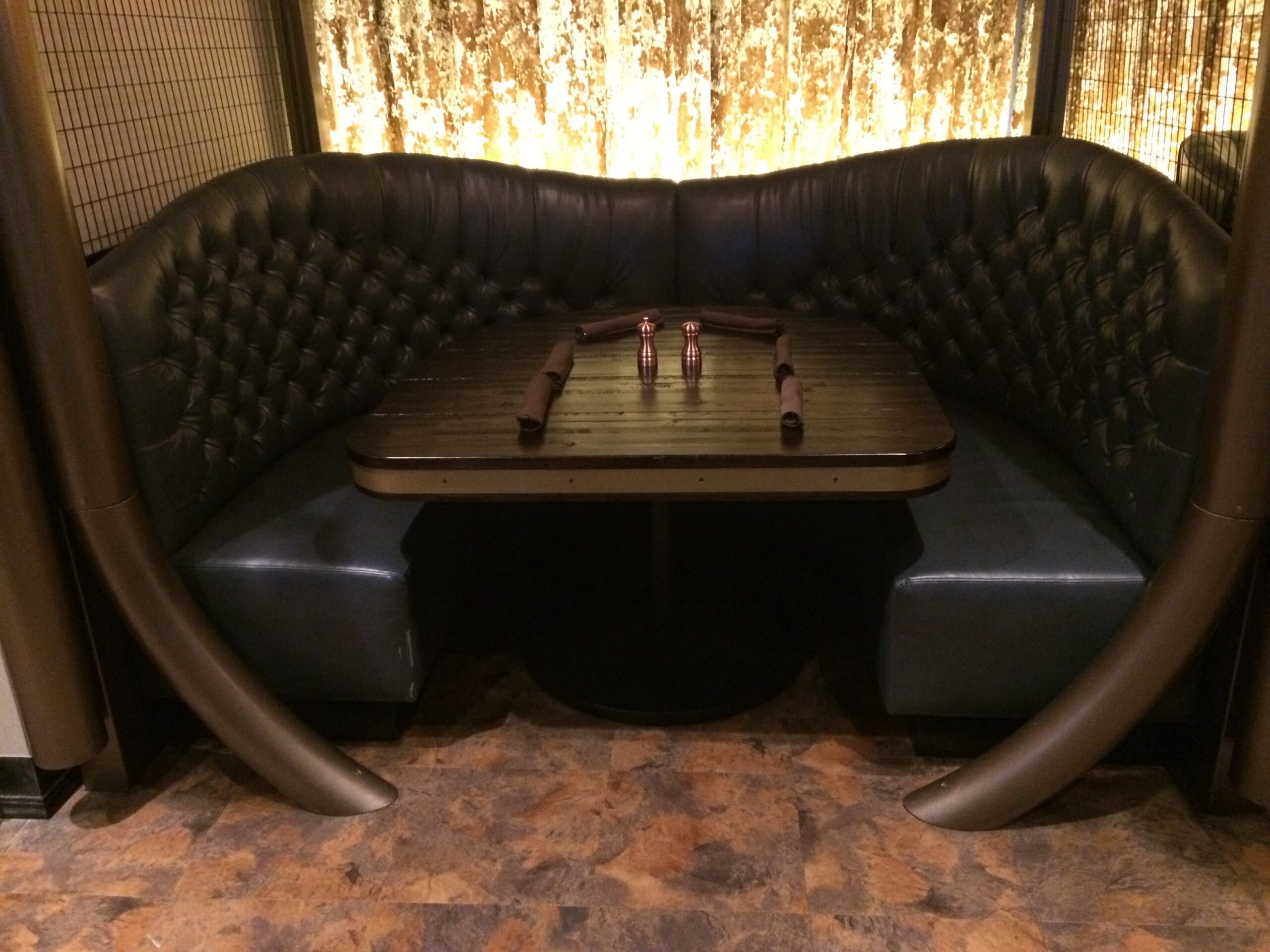
In addition to aesthetics, ergonomics and comfort are essential in booth design. To make booth seating pleasant and comfortable for customers, restaurant owners and designers consider various elements.
Cushioning and support
Restaurant booth upholstery is chosen with care to offer comfort and support. Customers are enticed to stay and take their time enjoying their meals by the soft seating, which is made with premium foam and cushioning. The chairs’ depth and angle have also been optimized for comfort.
Table placement
To ensure that customers can eat comfortably, the placement of tables concerning booth seats is essential. The booth’s dimensions are taken into consideration while choosing the height and size of the tables, so customers may eat comfortably and without feeling crowded.
Accessibility
Additionally, booths must suit customers of all ages and physical impairments. This includes having wheelchair-accessible alternatives available and ensuring booth seating is simple to enter and depart.
Conclusion
Restaurant booths have advanced significantly since their early days in pubs and diners. They have changed practicality, materials, and design, permanently altering the restaurant business. Booths have greatly influenced how we eat out, whether by fostering personal dining experiences, making the most of available space, or impacting aesthetics.
Restaurant booths will continue to change as customer tastes and business trends change in the future. Stalls will continue to be a treasured and adaptable component of restaurant design, whether found in fine dining places, fast-casual eateries, or themed restaurants. Its ability to blend comfort, use, and style, which results in an engaging and memorable dining experience for customers worldwide, is the source of its continuing appeal.

